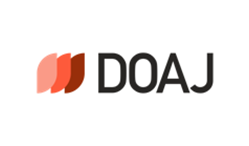ДВОФАКТОРНІСТЬ ТЕОРЕМИ ГЕКШЕРА-ОЛІНА ТА МОДЕЛЬ ТОРГІВЛІ ГРЕЦІЇ З ІНШИМИ КРАЇНАМИ ЄС
Ключові слова:
Модель Гекшера-Оліна, Греція, ЄС.Анотація
Розвинута «факторомістка» версія теорії Гекшера-Ояіна (Г-О), що базується на вирівнюванні нефакторних цін у двосекторній торгівлі між двома країнами, в моделі з трьома країнами та значною кількістю товарів. Теорема Г-0 досліджується на прикладі торгівлі Греції з країнами Європейського Союзу (ЄС). Відмінності в моделі спеціалізації у випадку торгівлі Греції з кожною країною ЄС пояснюються відмінностями у відносних забез-печеностях факторами виробництва.
Посилання
Brecher, A. - Choudhri, EU (1982), «The Factor Content of International Trade without Factor-Price Equalisation», Journal of International Economics, 12:277-283.
Brecher, A. - Choudhri, EU (1988), «The Factor Content of Consumption in Canada and the United States: A Two-Country Test of the Heckscher-Ohlin-Vanek Model», in Feenestra,R.C., (eds), Empirical Methods for International Trade, MIT Press: Cambridge Mass.
Clifton, D. S. - Marxsen, W. B. (1984), «An Empirical Investigation into the Heckscher-Ohlin Theorem», Canadian Journal of Economics, 17: 32-38.
Courakis, A. S - Moura-Roque, F. (1992), «Comparative Advantage and Structural Change in the Portuguese Pattern of Trade in Manufactures», in Amaral, J. F.- Lucena, D. - Mello, A. S. (eds), The Portuguese Economy Towards 1992, Kluwer Academic Publishers: Dordrecht, pp. 233-255.
Deardorff, A. V. (1982), «The General Validity of the Heckscher-Ohlin Theorem», American Economic Review, 72: 683-964.
Deardorff, A. V. (1984), «Testing Trade Theories and Predicting Trade Flows», in Jones, R. W. - Kenen, P. B. (eds), Handbook of International Economics, Elsevier, vol. I, pp. 467-517.
Elmslie, B. - Milberg, W. (1992), «International Trade and Factor Intensity Uniformity: An Empirical Assessment», Weltwirtschaftliches Archiv, 128: 464-486.
Eurostat (1988), External Trade Data-Nace Classification, External Trade Statistics: Brussels-Luxemburg.
Eurostat (1988), Main Economic Indicators, Luxemburg.
Eurostat (1985-1990), Industrial Trends, Luxemburg.
Eurostat (1990), Input-Output Tables 1985, National Accounts ESA, Brus-sels-Luxemburg.
Harkness, J. (1978), «Factor Abundance and Comparative Advantage», American Economic Review, 68: 784-800.
Heckscher, E. (1919), «The Effect of Foreign Trade on the Distribution of Income», Ekonomisk Tidskrift, 21: 1-32.
Helpman, E. (1984), «The Factor Content of Foreign Trade», Economic Journal, 94: 84-94.
Helpman, E. (1998), «Explaining the Structure of Foreign Trade: Where Do We Stand?», Weltwirtschaftliches Archiv, 134: 573-589.
Horiba, Y. (1974), «General Equilibrium and the H-0 Theorem of Trade: The multi-country case», International Economic Review, 15: 440-449.
James, A. M. - Elmslie, B. (1996), «Testing Heckscher-Ohlin-Vanek in the G-7», Weltwirt-schaftliches Archiv, 132: 139-159.
Jones, R. W. (1956), «Factor Proportions and the Heckscher-Ohlin Theorem», Review of Economic Studies, 24: 1-10.
Learner, E. (1984), Sources of International Comparative Advantage, MIT Press: Cambridge, Mass.
Learner, E. (1993), «Factor-Supply Differences as a Source of Comparative Advantage», American Economic Review, 83: 436-439.
Learner, E. (1995), «The Heckscher-Ohlin Model in Theory and Practice», Princeton Studies in International Finance, No 77, Princeton University, pp. 1-50.
Leontief, W. W. (1953), «Domestic Production and Foreign Trade; The American Capital Position Re-examined», American Philosophical Society: Papers and Proceedings, 97: 332-349.
Leontief, W. W. (1956), «Factor Proportions and the Structure of American Trade: Further Theoretical and Empirical Analysis», Review of Economics and Statistics, 38: 386-407.
Nehru, V. - Drareshwa, A. (1992), «A New Database on Physical Capital Stock: Sources, Methodology and Results», World Bank working papers.
O.E.C.D. (1960-1989), Detailed Tables, National Accounts, Paris.
Ohlin, B. (1933), Interregional and International Trade, Harvard University Press: Cambridge, Mass.
Polychronoloulos, G. - Korres, G. - Rigas, G. (2001), «Globalisation, Direct Investment and Productivity Growth», 51 International Atlantic Economic Conference, Athens.
Rassekh, F. - Thomson, H. (1993), «Factor Price Equalisation: Theory and Evidence», Journal of Economic Integration, 8: 1-32.
Samuelson, P. A. (1953(54), «Prices of Factors and Goods in General Equilibrium», Review of Economic Studies, 21: 1-20.
Treffer, D. (1993), «International Factor Price Differences: Leontief was Right», Journal of Political Economy, 101: 961-985.
Tsounis, N. K. (1992), The Effects of European Economic Integration on the Greek Economy and the Pattern of Greek International Trade, Unpublished Ph.D. Thesis submitted to the University of Manchester.
Tsounis, N. (1996), «The Factor Content of Greek Trade with Other EU Countries», Greek Economic Review, 18: 1-22.
Tsounis, N. (2000), «Testing the Heckscher-Ohlin Theory in the Trade between Greece and the EU International Review of Economics and Business, 47:295-315.
Vanek, J. (1968), «The Factor Proportions Theory: the N-Factor Case», Kyk-los, 21: 749-756.
United Nations (1963-1989), Industrial Statistics Yearbook, New York.
United Nations (1977-1984), Yearbook of National Accounts Statistics, International Tables, New York.
##submission.downloads##
Опубліковано
Як цитувати
Номер
Розділ
Ліцензія
Автори, які публікуються у цьому журналі, погоджуються з наступними умовами:
- Автори залишають за собою право на авторство своєї роботи та передають журналу право першої публікації цієї роботи на умовах ліцензії Creative Commons Attribution License, котра дозволяє іншим особам вільно розповсюджувати опубліковану роботу з обов'язковим посиланням на авторів оригінальної роботи та першу публікацію роботи у цьому журналі.
- Автори мають право укладати самостійні додаткові угоди щодо неексклюзивного розповсюдження роботи у тому вигляді, в якому вона була опублікована цим журналом (наприклад, розміщувати роботу в електронному сховищі установи або публікувати у складі монографії), за умови збереження посилання на першу публікацію роботи у цьому журналі.
- Політика журналу дозволяє і заохочує розміщення авторами в мережі Інтернет (наприклад, у сховищах установ або на особистих веб-сайтах) рукопису роботи, як до подання цього рукопису до редакції, так і під час його редакційного опрацювання, оскільки це сприяє виникненню продуктивної наукової дискусії та позитивно позначається на оперативності та динаміці цитування опублікованої роботи (див. The Effect of Open Access).








